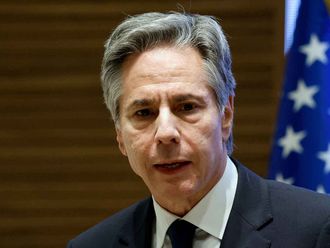
Highlights
- So two RBI governors in a row had serious issues with the easy ride corporates seemed to be getting under the Modi government. Both Patel and Rajan red flag serious issues, which have not been addressed by the government.
- The common factor in case of both appears to be the overarching powers that Modi’s PMO has aggrandised.
Eventually the coronavirus will provide a huge alibi for the Modi government for its utterly underwhelming performance of steering the Indian economy.
Narendra Modi’s instinct to centralise all authority in the hands of his all-powerful Prime Minister’s Office (PMO) has seen full fruition in his second term. Arguably, this is the most critical reason for the economy to tank post the Modi-made disaster that was demonetisation, which made 86.4 per cent of India’s currency vanish overnight.
The second hit was the awfulness of the babu excess that is the badly implemented Goods and Services Tax (GST).
Even more cause for alarm from a prime minister, who was famous for being corporate friendly as Gujarat chief minister is what Urjit Patel, former governor of the Reserve Bank of India, who famously and in an unprecedented move quit his post, has now revealed.
Patel, in his just released book - Overdraft: Saving the Indian Saver says the move to dilute the new bankruptcy laws caused disagreements between the Modi government and the Central Bank.
Patel, who headed the RBI between September 2016 and his sudden resignation in December 2018, says the government seemed to lose enthusiasm for the legislation in the middle of the year when he left the Central Bank.
The rift centered around an RBI circular issued in February 2018, which forced banks to immediately classify borrowers are defaulters when they delayed repayment; barred defaulting company founders from trying to buy back their firms during insolvency auctions; and push them into bankruptcy if a resolution timeline wasn’t met.
Patel, in a chapter, called the Empire Strikes back says: “Instead of buttressing and future proofing the gains an atmosphere to go easy on the pedal ensued.”
While Patel has refrained from naming names, the period he flags is when Piyush Goyal was temporarily handling finance. Goyal was clearly carrying out instructions from the powerful PMO as he is a lightweight politician utterly dependent on Modi’s political capital.
Patel was the second RBI governor who felt that he was unable to work with the Modi government. The first and more famous was Raghuram Rajan whose term as governor was not renewed by the Modi government.
Rajan hit a similar wall with the Modi PMO when he sent the Rajan list to the PMO to take action against “a list of high profile fraud cases of Non-Performing Assets for coordinated investigation” eight months into Modi’s first term.
Read more from Swati Chaturvedi
- COVID-19-stricken 80-year-old poet Varavara Rao found lying in urine symptomatic of India’s apathy towards democracy
- Sushant Singh Rajput death: Do we express grief by bullying these days?
- Battle for Rajasthan gets murkier as Pilot and Gehlot plot, prepare for collision course
- Encounter Raj in India: It could be anyone of us when we say RIP rule of law. Vikas Dubey today, you tomorrow
Not only did the Modi government not act, it refused to make the list public. Some of the names allegedly flagged by Rajan managed to flee the country despite being on the Rajan list.
So two RBI governors in a row had serious issues with the easy ride corporates seemed to be getting under the Modi government. Both Patel and Rajan red flag serious issues, which have not been addressed by the government.
All-powerful PMO
The common factor in case of both appears to be the overarching powers that Modi’s PMO has aggrandised. It refused to order investigations in to the Rajan list and someone in the highest echelons of the Modi government did not want time bound action of threat insolvency against corporate debtors.
Modi, has famously after losing two RBI governors, said he preferred “hard work” to Harvard. What this attitude has seen is a talent bleed of huge proportions. Chief economic advisor Arvind Subramnium quit has chief economic advisor before the completion of his term in 2018. Viral Acharya, the RBI deputy governor, quit in June 2019 after he had angered the Modi government by questioning the transfer of RBI reserves to the government.
It all began with vocal Modi supporter Arvind Panagariya quitting the Niti Ayog in August 2017. The Ayog was the planning commission renamed by Modi.
Capital like stable rule of law and the “spectaculars” like demonetisation that Modi keeps coming up with periodically has made investors nervous. It does not help that Modi’s entire economic team look more like cheerleaders and less like economic managers.
The proliferation of Gujarat cadre IAS officials in the PMO who work the phones to all stake holders and seem to have a final say in policy making is also causing its own problems. Nobody seemed to believe Nirmala Sitharaman, another lightweight politician appointed as finance minister, and her stimulus packages before coronavirus broke out and it did nothing to stimulate demand and get confidence back. The much hailed Gujarat model is clearly having trouble going national.









